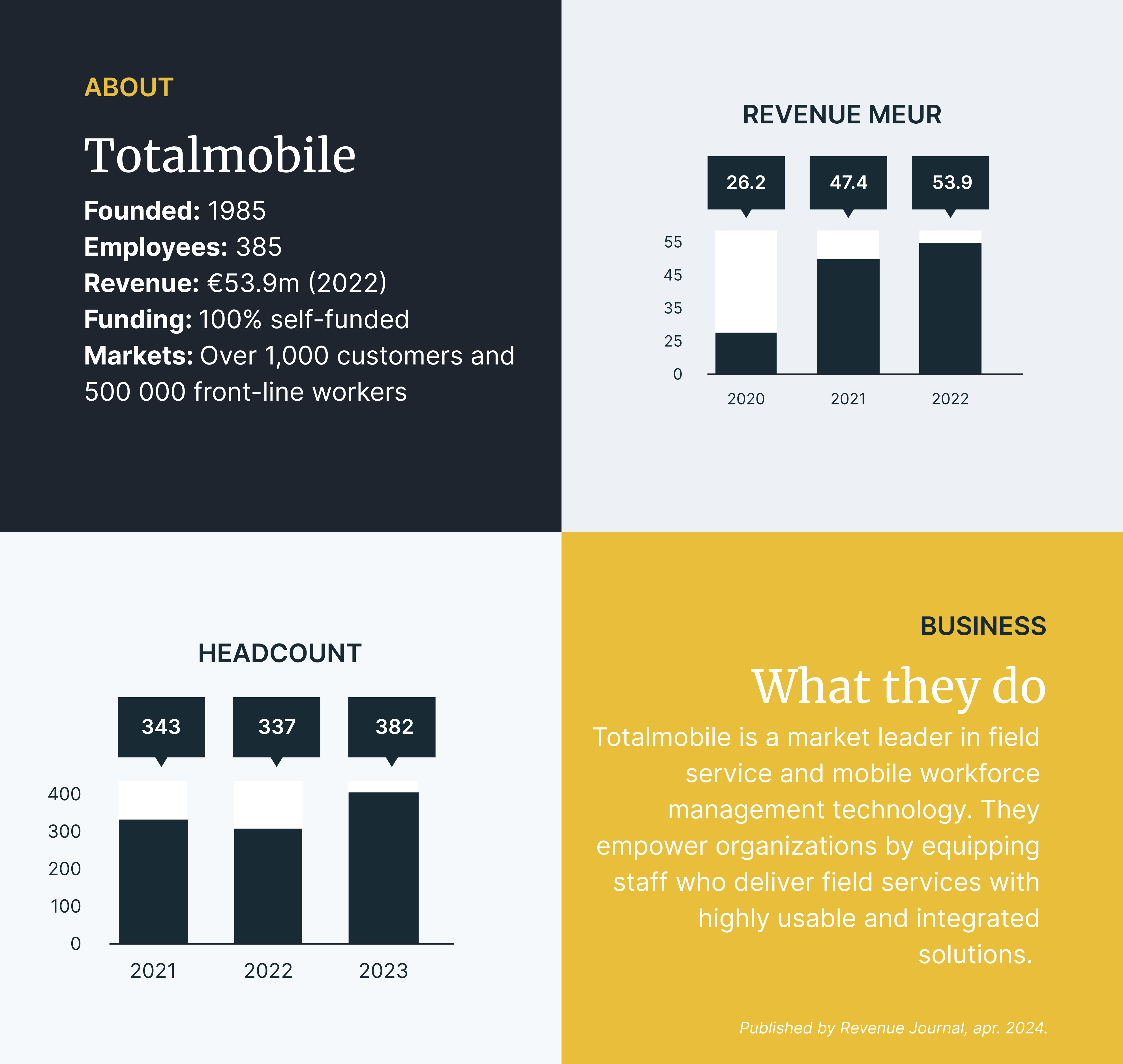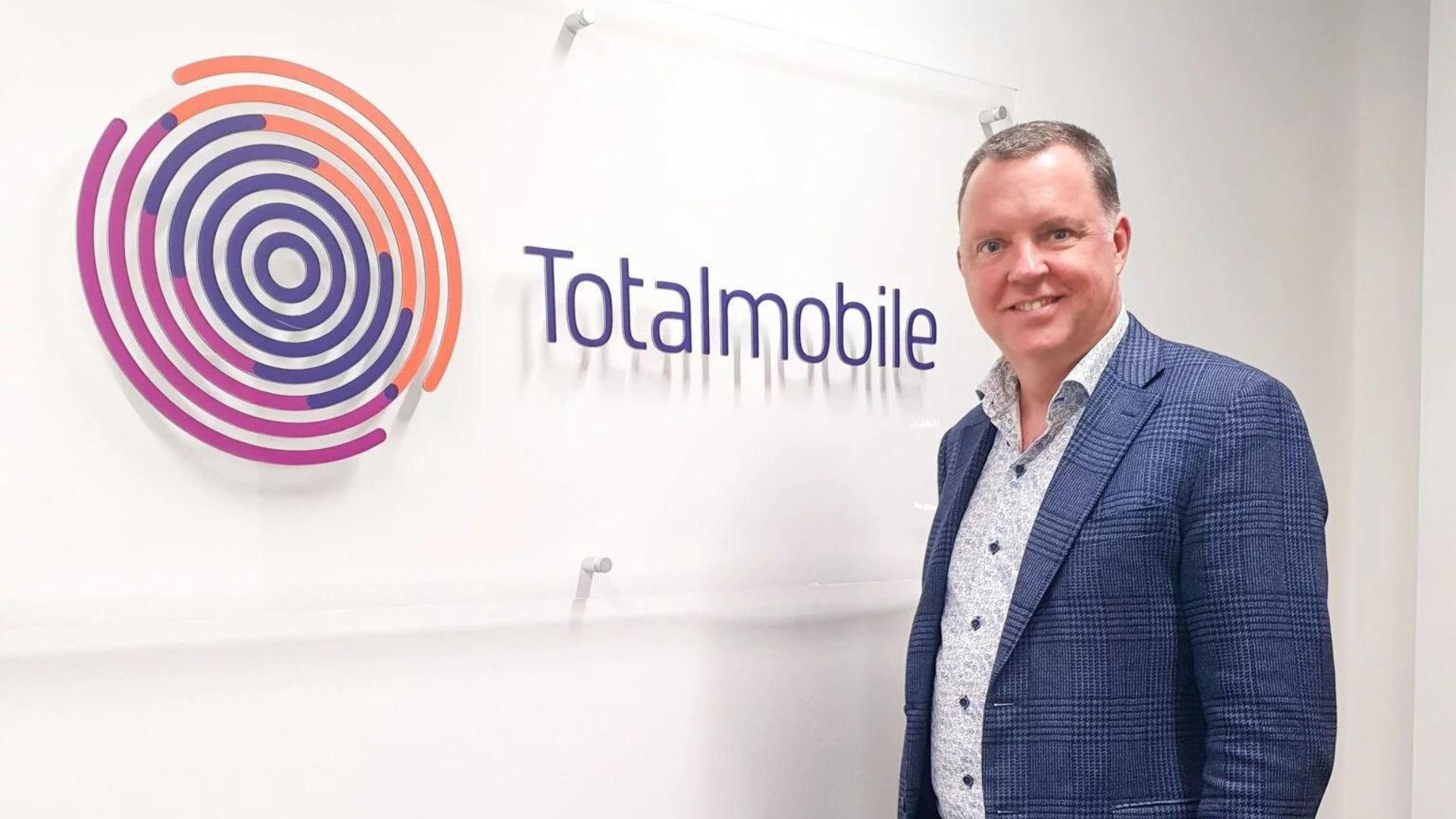
Tip 1: respect what went down before you
When I come in, my brief is to take a business on the next stage of its journey.
The previous CEO of Totalmobile, Jim Darragh, had done a great job and is still involved in the business. He's now deputy Chairman. He has been with the company for seven years.
Totalmobile was getting ready for a new growth phase, and Jim had been asking himself, "Is it time for a new direction and a fresh pair of eyes?" After some soul-searching, Jim took the leap and decided to explore new avenues. So, the Board needed to change the person in the hot seat.
It's always a risk to bring a new CEO into a business that is functioning pretty well. Especially when it wasn't a case of there being a significant problem to solve.
Irrespective of the background, I'm always really conscious of the danger that the patient (the company) rejects the organ (me!). Because that can easily happen.
To avoid this, I try not to drive too much change too quickly.
When you step through the door, I think it's really important to appreciate what's gone on before. To balance the messaging and to ensure that you're telling the team, "These things here that you've done are great. However, let's look over there to make some improvements."
You also need to understand unwritten cultural behaviours and unwritten parts of information flow – those things that aren't on an organisation chart or in a company manual.
Tip 2: recognise that 2-3 months is the sweet spot for making changes
When I start at a new firm, I walk through the door and engage with the customers, partners, and the immediate team, alongside their direct reports. I take part in sales presentations and customer meetings, which means I can quickly get a really good sense of what's going on in the business.
Then, two to three months in, I gather the senior team together at an off-site location and help them formulate a plan.
I use what's called a balanced scorecard, which focuses on finance, product and processes, customers and markets, and people.
Using this framework and with some rigorous, very open, and forthright discussions over the course of two days, you can quickly create a coherent plan.
It's a plan that's got my fingerprints on it, but it's also created by the team around me. It helps you create buy-in and is a powerful rallying cry against which you can build a budget, a vision and messaging to inspire your wider team.
This approach has worked every time I've stepped into a new CEO role.
Tip 3: watch out for 'High-D' type leaders
One thing to be aware of when choosing a new leader is a psychological characteristic that I have seen in quite a few high-achieving CEOs.
I'd recommend taking a look at the psychological framework called the DiSC model, which is built on two behavioural axes – outward- or inward-focussed, and task- or people-oriented. DiSC stands for Dominance, Influence, Steadiness and Conscientiousness.
When your CEO scores highly on the Dominance scale, they're known as a "High-D" – or "proactive introvert." A proactive introvert will usually set course, take risks, proceed with very strong direction and give very concise instructions.
But they can easily forget that their team have got different characteristics and may need more information, more study, more buy-in.
As a result, there can be a gap between where the CEO is and where the team is. And that gap is dangerous because it can mean you lose connection with the people who make your vision happen.
I've entered lots of different situations over the course of my career, often working for very large organisations, and I've seen the consequences of some flawed thinking in this regard. I've made mistakes of my own, too.
I'm very fortunate – I've managed to collect all these experiences in my virtual toolkit. It's really important to bring those scars to the table and build that into the way you approach your next job – it's crucial to be genuine, to be yourself.

Photo: Totalmobile
Tip 4: embed your sales team inside your target's offices
Your people have to be able to engage with your customers' problems. So, my top tip if you're in SaaS is to make your key sales objective a study with the customer.
If you can make this happen, then you connect your solution to their problem and jointly build a case for change – a business solution that just happens to be powered by your technology.
When you're selling complex solutions, this process is crucial, and we do it on as many deals as possible, not just the big ones.
Here's how it works: we send a consultant in, actually sitting in the customer's office. The consultant is really getting under the covers of the requirement, what's going on, and they'll see all the spreadsheets flying around.
All in the specific context of that business.
As a result of this, when we present a solution to the C-suite, we're not simply saying, "We've got this feature that matches these requirements."
Instead, we have a report that says, "We've been in your offices, we've understood the challenges, and these are the focused solutions that we have for them."
And by the way, we've also done a value assessment, so we know that the business benefit of doing this could be this many thousands or millions of pounds to your business over the next few years.
So, if you can get that precious engagement where you're actually in their office, you're halfway to winning the day.

Photo: Totalmobile
Tip 5: get a CEO in when running your business stops being fun
Let’s imagine a company set up by a technologist who has created a great technological solution. At some point, as the business grows and becomes more complex, the founder will likely have to start doing HR reviews and building management structures – spending half their day looking at spreadsheets.
At that point, the founder may go, "I'm outside of my comfort zone. I'm not adding value in those areas – and it's dragging me away from what I'm great at."
My single best piece of advice to founders experiencing this is: if you're no longer enjoying it, do something about it.
The answer might be a CEO, it might be a change of team or role, or it might even be a change of ownership. But you've probably arrived at the point where you need to try something new.
Tip 6: every great business needs a visionary (and it might not be you)
If I was launching a business tomorrow, my first hire would be a visionary.
I have accepted that I'm a coordinator. My superpower is building strong teams, harnessing their capability, making sure they are working with purpose and ensuring that we transform companies and drive them forward.
However, this is not enough. With a software business especially, I believe you need a visionary to say, "We're going to change the world in this way."
But that's OK: build them into your team. I've met a few of them over the years, and they are amazing people – gold dust, precious.
/ Phil Race
CEO at Totalmobile.









